Here are the Scott catalogue numbers for this issue:
RW87 $25 Black-bellied whistling ducks Hunting Permit Stamp, self-adhesive
RW87A $25 Black-bellied whistling ducks Hunting Permit Stamp, self-adhesive, souvenir sheet of 1
The First Day of Sale event for the 2020-2021 Duck Stamp and Junior Duck Stamp was to 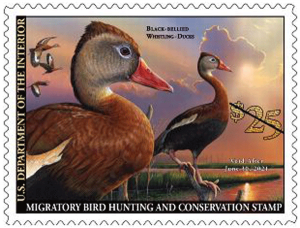 take place Friday, June 26, from 10 a.m. to noon at the Bass Pro Shop at 20000 Bass Pro Drive in Spanish Fort, AL. This event has now been canceled, although the stamps went on sale on June 26th.
take place Friday, June 26, from 10 a.m. to noon at the Bass Pro Shop at 20000 Bass Pro Drive in Spanish Fort, AL. This event has now been canceled, although the stamps went on sale on June 26th.
The $25.00 2020-2021 Federal Duck Stamp depicts two black-bellied whistling ducks in a painting by artist Eddie LeRoy.
Buying the stamps? They are offered at many post offices, retail locations and more. FWS has a list.
Below are the press release for the stamp, the junior stamp, and details about next year’s design contest. U.S. Postal Service information is at the bottom of this page.
[press release]
Alabama Artist Wins Federal Duck Stamp Contest
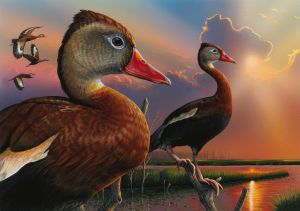 After two days of competition, Eddie LeRoy of Eufaula, Alabama, emerged as the winner of the Federal Duck Stamp competition with his painting of a black-bellied whistling-duck pair [left]. The announcement was made by U.S. Fish and Wildlife Service Principal Deputy Director Margaret Everson at the annual contest, held this year at Patuxent Research Refuge in Laurel, Maryland.
After two days of competition, Eddie LeRoy of Eufaula, Alabama, emerged as the winner of the Federal Duck Stamp competition with his painting of a black-bellied whistling-duck pair [left]. The announcement was made by U.S. Fish and Wildlife Service Principal Deputy Director Margaret Everson at the annual contest, held this year at Patuxent Research Refuge in Laurel, Maryland.
LeRoy’s acrylic painting will be made into the 2020-2021 Federal Migratory Bird Hunting and Conservation Stamp, or “Duck Stamp”, which will go on sale in late June 2020. The Service produces the Federal Duck Stamp, which sells for $25 and raises approximately $40 million in sales each year. These funds support critical conservation to protect wetland habitats in the National Wildlife Refuge System for the benefit of wildlife and the enjoyment of people.
“These artists are extremely talented, and the quality of the art is matched by the incredible conservation work funded by Duck Stamp sales,” said U.S. Secretary of the Interior David Bernhardt. “By purchasing a Duck Stamp, waterfowl hunters have helped raise millions of dollars to conserve wildlife and healthy wetland habitats within the National Wildlife Refuge System.”
Eighty-five years after it was established, sales of the Duck Stamp to hunters, bird watchers, outdoor enthusiasts and collectors have raised more than $1 billion to conserve over six million acres of habitat for birds and other wildlife and provide countless opportunities for hunting and recreation on our public lands.
This is LeRoy’s first Federal Duck Stamp Contest win.
 “I’m proud to be part of an event with the rich tradition of the Duck Stamp Contest. The first one took place in 1949, and 70 years later, the contest – and the wetland conservation work it supports – is going stronger than ever,” said Everson. “I thank the staff at Patuxent Research Refuge for hosting the contest this year. The opportunity to experience native wildlife, trails, canoeing, fishing and more at this urban oasis demonstrates how you don’t need to go far from a major city to explore a national wildlife refuge.”
“I’m proud to be part of an event with the rich tradition of the Duck Stamp Contest. The first one took place in 1949, and 70 years later, the contest – and the wetland conservation work it supports – is going stronger than ever,” said Everson. “I thank the staff at Patuxent Research Refuge for hosting the contest this year. The opportunity to experience native wildlife, trails, canoeing, fishing and more at this urban oasis demonstrates how you don’t need to go far from a major city to explore a national wildlife refuge.”
In addition to LeRoy, Cory McLaughlin of Wells, Texas, placed second with his oil painting of a black-bellied whistling-duck pair, and Frank Mittelstadt of Beaver Dam, Wisconsin, took third place with his acrylic painting of a bufflehead pair.
Of 190 entries in this year’s competition, 13 entries made it to the final round of judging. Eligible species for this year’s Federal Duck Stamp Contest were the black-bellied whistling-duck, emperor goose, American black duck, bufflehead and northern shoveler. View the online gallery of the 2019 Federal Duck Stamp Art Contest entries.
“The Duck Stamp is a beautiful collectible and a great artistic tradition. The design of each year’s stamp has been chosen in this wonderful open art contest. I am proud to be a part of this heritage that also benefits habitat and wildlife,” said Jerome Ford, assistant director for the Service’s Migratory Bird Program.
The judges for this year’s Federal Duck Stamp Contest were: Walter Matia, artist; Brian K. Schmidt, biologist; David Elwing, conservation partner and philatelist; Wayne Knight, artist; and Peggy Watkins, artist.
Waterfowl hunters age 16 and older are required to purchase and carry the current Federal Duck Stamp. Many non-hunters, including birdwatchers, conservationists, stamp collectors and others also purchase the stamp in support of habitat conservation. Additionally, a current Federal Duck Stamp can be used for free admission to any national wildlife refuge that charges an entry fee.
Funds raised from the sale of Federal Duck Stamps go toward the acquisition or lease of habitat for the Refuge System. This year, the Migratory Bird Conservation Commission, chaired by Secretary Bernhardt, awarded $19.3 million from the fund, made up partly of Duck Stamp dollars, to support the acquisition of refuge lands from willing sellers. The new areas provide additional access to the public to some of the most spectacular places available for hunting, fishing, birdwatching, hiking and other outdoor activities.
You can contribute to conservation and America’s great outdoors tradition by buying Federal Duck Stamps at many national wildlife refuges, sporting goods stores and other retailers, through the U.S. Postal Service, or online at www.fws.gov/birds/get-involved/duck-stamp/buy-duck-stamp.php.
Junior Duck Stamp:
[press release]
Madison Grimm, Aged 13, Wins U.S. Fish and Wildlife Service 2020 National Junior Duck Stamp Art Contest
A talented young artist from South Dakota has taken top honors at the National Junior Duck Stamp Art Contest. A wood duck by 13-year old Madison Grimm, will grace the 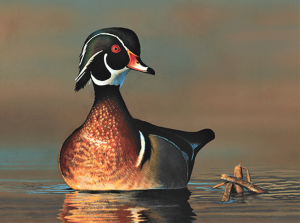 2020-2021 Junior Duck Stamp, which raises funds to educate and engage our nation’s youth in wildlife and wetlands conservation and outdoor recreation.
2020-2021 Junior Duck Stamp, which raises funds to educate and engage our nation’s youth in wildlife and wetlands conservation and outdoor recreation.
A panel of five judges chose the entry, painted in acrylic, from among best-of-show entries from 49 states and Washington, D.C.
“I am thrilled for the winner, and am so proud of the thousands of students who participated in this program throughout the country,” said Service Director Aurelia Skipwith. “The Junior Duck Stamp Program encourages students to explore their natural world through science, art and language, creating a lifelong love of nature and the outdoors.”
Students in kindergarten through grade twelve participate in their annual state Junior Duck Stamp Program through their school, home, art studio or after-school group, or from a refuge, park or nature center. After learning about wetlands, waterfowl and wildlife conservation, they express their learning through a drawing or painting of a duck, goose or swan.
The top piece of art in the nation – chosen at this annual competition – is featured on the Junior Duck Stamp, sales of which support educational programs and activities that nurture our next generation of conservationists.
The Federal Junior Duck Stamp Conservation and Design Program began in 1989 as an extension of the Migratory Bird Hunting and Conservation Stamp, commonly known as the Duck Stamp. The first national Junior Duck Stamp art contest was held in 1993. The stamp encourages students to explore their natural world, participate in outdoor recreation activities, and learn wildlife management principles. Approximately 2,000 Junior Duck Stamps are sold annually for $5 each.
 In addition to the art contest, a Junior Duck Stamp Conservation Message Contest encourages students to express in words the spirit of what they have learned through classroom discussions, research and planning for their Junior Duck Stamp Contest entries. This year’s winner is Abby Gilreath, 16, of Nebraska with her message: “When we practice conservation, we protect not only our wildlife but our health and environment for future generations.”
In addition to the art contest, a Junior Duck Stamp Conservation Message Contest encourages students to express in words the spirit of what they have learned through classroom discussions, research and planning for their Junior Duck Stamp Contest entries. This year’s winner is Abby Gilreath, 16, of Nebraska with her message: “When we practice conservation, we protect not only our wildlife but our health and environment for future generations.”
“We are so honored to help run a program where young people of all different backgrounds and interests all showcase their talents,” said Assistant Director for Migratory Birds Jerome Ford. “To take what they learn about wildlife, waterfowl and habitat conservation, and then turn that into a piece of personal art they share around the country, is just an absolute treasure.”
This year, over 14,000 young artists submitted entries to the Junior Duck Stamp contests around the nation. For complete contest results, visit www.fws.gov/birds/education/junior-duck-stamp-conservation-program.php.
The Junior Duck Stamp Contest winner receives $1,000. The second place winner receives $500; the third-place winner receives $200; the Conservation Message winner receives $200.
You can buy Junior Duck Stamps online through the U.S. Postal Service and Amplex and at some national wildlife refuges. Proceeds from the sale of Junior Duck Stamps are used for recognition of individuals who submit winning designs in state or national competitions and to further activities related to the conservation education goals of the program.
The First Day of Sale ceremony for the 2020-2021 Duck Stamp and Junior Duck Stamp is planned for June 26, 2020, at Bass Pro Shops in Spanish Fort, Alabama. The event is scheduled to begin at 10:00 a.m. CDT and is free and open to the public. The U.S. Postal Service will have a special cancellation and both stamp artists are expected to be at the event.
Next Duck Stamp:
The 2020 Federal Duck Stamp Contest will be held September 25 & 26 at Drake University in Des Moines, IA. In addition to the judging and announcement of the winner, there will be family friendly events and more. Admission is free.
From the USPS Postal Bulletin:
On June 26, 2020, in Spanish Fort, AL, the U.S. Department of the Interior will issue the  $25.00 Migratory Bird Hunting and Conservation stamp for the 2020–2021 waterfowl hunting season. The pressure-sensitive adhesive (PSA) stamp will go on sale nationwide June 26, 2020, and is valid through June 30, 2021.
$25.00 Migratory Bird Hunting and Conservation stamp for the 2020–2021 waterfowl hunting season. The pressure-sensitive adhesive (PSA) stamp will go on sale nationwide June 26, 2020, and is valid through June 30, 2021.
Availability to Post Offices:
- Item 336300, PSA Pane of 1: No automatic distribution, but postmasters may order these.
- Item 336400, PSA Pane of 20: No automatic distribution, and the USPS will only them through its Stamp Fulfillment Services operation and by consignment via Amplex Corporation.
Technical Specifications:
Issue: Migratory Bird Hunting and Conservation Stamp
Item Number: 336300
Denomination & Type of Issue: $25.00, Special
 Format: Pane of 1 (1 design)
Format: Pane of 1 (1 design)
Series: Federal Duck
Issue Date & City: June 26, 2020, Spanish Fort, AL 36527
Art Director: Suzanne Fellows, FWS
Artist: Eddie LeRoy
Modeler: Joseph Sheeran
Manufacturing Process: Offset, Microprint “FWS”
Printer: Ashton Potter (USA) Ltd. (APU)
Press Type: Muller A76
Stamps per Pane: 1
Print Quantity: 2,406,000 stamps
Paper Type: Nonphosphored Type III
Adhesive Type: Pressure-sensitive
Processed at: Ashton Potter (USA) Ltd. (APU)
Colors: Black, Cyan, Magenta, Yellow, Invisible Fluorescent
Stamp Orientation: Horizontal
Image Area (w x h): 1.762 x 1.289 in./44.755 x 32.741 mm
Overall Size (w x h): 1.89 x 1.417 in./48.006 x 35.992 mm
Full Pane Size (w x h): 6.125 x 2.625 in./155.575 x 66.675 mm
Plate Size: 36 stamps per revolution
Plate Numbers: N/A
Marginal Markings:
Front: Selvage Text: U.S. Fish & Wildlife Service, 2020–2021 Migratory Bird Hunting and Conservation Stamp • Promote Habitat Conservation • informative text • Artist: Eddie LeRoy, Black-bellied Whistling-Ducks© • If applicable, sign your stamp.
Back: Verso-text • Barcode • Ordering information • U.S. Department of the Interior logo • U.S. Fish & Wildlife Service logo
Technical Specifications:
Issue: Migratory Bird Hunting and Conservation Stamp
Item Number: 336400
Denomination & Type of Issue: $25.00, Special
Format: Pane of 20 (1 design)
Series: Federal Duck
Issue Date & City: June 26, 2020, Spanish Fort, AL 36527
Art Director: Suzanne Fellows, FWS
Artist: Eddie LeRoy
Modeler: Joseph Sheeran
 Manufacturing Process: Offset, Microprint “FWS”
Manufacturing Process: Offset, Microprint “FWS”
Printer: Ashton Potter (USA) Ltd. (APU)
Press Type: Muller A76
Stamps per Pane: 20
Print Quantity: 60,000 stamps
Paper Type: Nonphosphored Type III
Adhesive Type: Pressure-sensitive
Processed at: Ashton Potter (USA) Ltd. (APU)
Colors: Black, Cyan, Magenta, Yellow, Invisible Fluorescent
Stamp Orientation: Horizontal
Image Area (w x h): 1.762 x 1.289 in./44.755 x 32.741 mm
Overall Size (w x h): 1.89 x 1.417 in./48.006 x 35.992 mm
Full Pane Size (w x h): 8.25 x 8.25 in./209.55 x 209.55 mm
Plate Size: 180 stamps per revolution
Plate Numbers: “P” followed by five (5) single digits
Marginal Markings:
Front: Selvage Text: “Artist: Eddie LeRoy” (4 locations) • “Department of the Interior 20 x $25.00” (2 locations) • Silhouetted image of duck (2 locations) • Plate number (4 locations)
Back: Verso-text behind each stamp • Barcodes (4 locations)
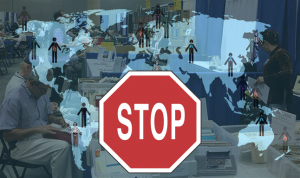 Most major stamp collecting shows in the U.S. this spring, if not all, have been postponed or canceled.
Most major stamp collecting shows in the U.S. this spring, if not all, have been postponed or canceled.
 Vol. 2A: C through Cur countries
Vol. 2A: C through Cur countries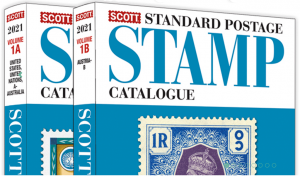 each stamp is assigned a number that becomes its universally understood reference point for all collectors and dealers. The latter is important when you look at printed price lists, offerings on Internet sites, or in auction catalogues.
each stamp is assigned a number that becomes its universally understood reference point for all collectors and dealers. The latter is important when you look at printed price lists, offerings on Internet sites, or in auction catalogues.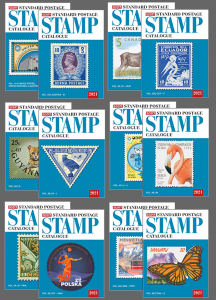 their tables at stamp shows. You can also get together with another collector to buy catalogues that you can share.
their tables at stamp shows. You can also get together with another collector to buy catalogues that you can share.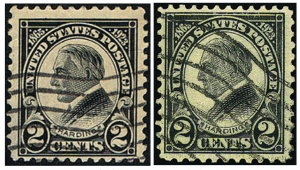 Take a look at the picture on the right, in which are copies of Scott #610 and #613. The former, a perf 11×11, flat plate-printed black stamp, is catalogued 25¢ used. The latter, a perf 11×11 rotary press printing in black, catalogues $37,500. The difference is a quarter millimeter in the height of the stamp design!
Take a look at the picture on the right, in which are copies of Scott #610 and #613. The former, a perf 11×11, flat plate-printed black stamp, is catalogued 25¢ used. The latter, a perf 11×11 rotary press printing in black, catalogues $37,500. The difference is a quarter millimeter in the height of the stamp design!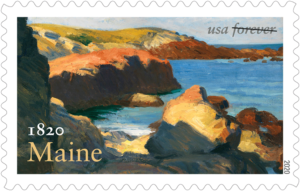 5456 (55¢) Maine Statehood Bicentenary
5456 (55¢) Maine Statehood Bicentenary take place Friday, June 26, from 10 a.m. to noon at the Bass Pro Shop at 20000 Bass Pro Drive in Spanish Fort, AL.
take place Friday, June 26, from 10 a.m. to noon at the Bass Pro Shop at 20000 Bass Pro Drive in Spanish Fort, AL.  After two days of competition, Eddie LeRoy of Eufaula, Alabama, emerged as the winner of the Federal Duck Stamp competition with his painting of a black-bellied whistling-duck pair [left]. The announcement was made by U.S. Fish and Wildlife Service Principal Deputy Director Margaret Everson at the annual contest, held this year at Patuxent Research Refuge in Laurel, Maryland.
After two days of competition, Eddie LeRoy of Eufaula, Alabama, emerged as the winner of the Federal Duck Stamp competition with his painting of a black-bellied whistling-duck pair [left]. The announcement was made by U.S. Fish and Wildlife Service Principal Deputy Director Margaret Everson at the annual contest, held this year at Patuxent Research Refuge in Laurel, Maryland. 2020-2021 Junior Duck Stamp, which raises funds to educate and engage our nation’s youth in wildlife and wetlands conservation and outdoor recreation.
2020-2021 Junior Duck Stamp, which raises funds to educate and engage our nation’s youth in wildlife and wetlands conservation and outdoor recreation.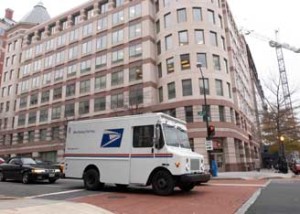 Now more than ever, consumers rely on cards and mail to keep in touch with family and friends and to overcome feelings of isolation, according to a recent survey conducted by the US Postal Service. The survey highlighted the important role that sending and receiving mail plays in helping Americans stay connected during a time of social distancing and stay-at-home mandates.
Now more than ever, consumers rely on cards and mail to keep in touch with family and friends and to overcome feelings of isolation, according to a recent survey conducted by the US Postal Service. The survey highlighted the important role that sending and receiving mail plays in helping Americans stay connected during a time of social distancing and stay-at-home mandates.

